Cooler bag

A cooler bag is a must-have item in the spring-summer season for those who like to get out into nature. On a hike, on the beach, on a picnic, this useful invention will keep food fresh and tasty and drinks cool.
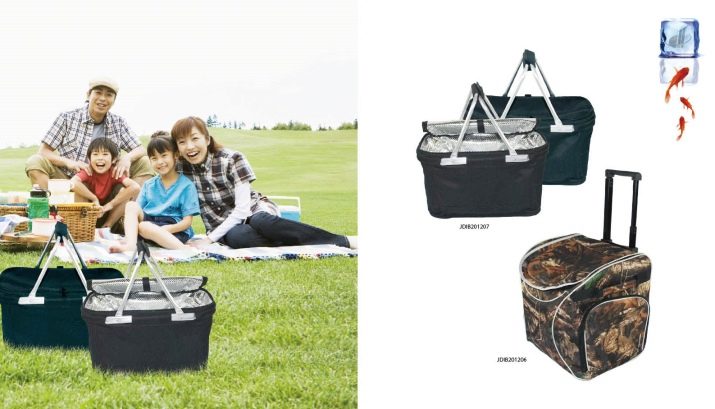
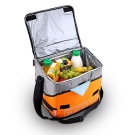

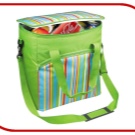
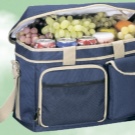

What is and how is it different from a thermal bag?
The name of portable refrigerators, firmly entrenched in thermal bags, is, strictly speaking, not entirely correct. Cooler bags imply the presence of a cooling system, therefore it is fair to refer to them only car cooling devices powered by a battery, and all other camping accessories to keep food fresh are called isothermal containers or thermal containers.
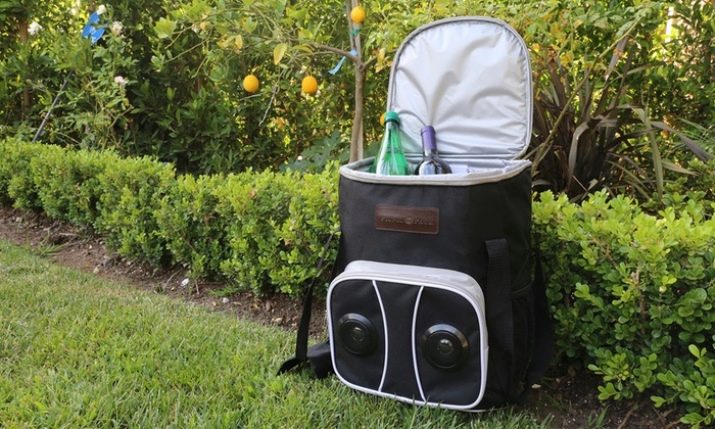
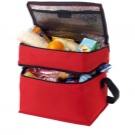
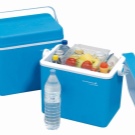
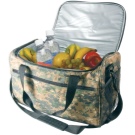
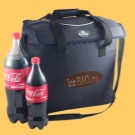
Isothermal containers work on the principle of maintaining a low temperature at the same level for a long time. This ability is provided by the special design of the bag and additional refrigeration elements. In essence, it is similar to a thermos flask: thick walls made of reflective material, between which there is a layer of thermal insulating foam and a space for cold storage batteries.
The food placed inside is protected from the influence of the environment by a layer of material that does not conduct heat well, so the low temperature remains for a long time. You can also move hot food in the thermal bag.

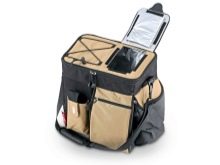
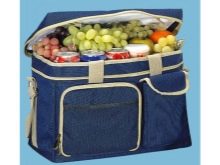
Types and models
All thermal bags are divided into:
- isothermal (fabric);
- thermal containers (made of hard plastic);
- car refrigerators.
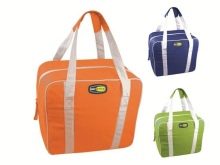

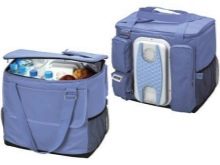
For auto
On long trips, the temperature in the car, even if the air conditioner is on, does not at all contribute to the fact that the food for the picnic remains in the form in which they were taken out of the refrigerator. The heated trunk space is also not suitable for safely transporting provisions, so a car refrigerator is the best solution.
The device is powered by a car cigarette lighter. It turns on and off by pressing a button, the temperature inside the refrigerator compartment is regulated by a toggle switch.
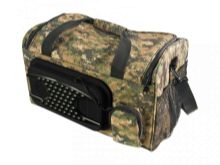
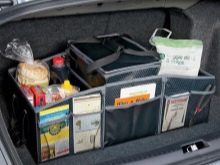
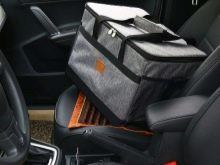
There are three types of car refrigerators:
Thermoelectric
They are the majority, as they are the most compact, lightweight and budget devices. The principle of operation is based on the so-called "Peltier Effect": a current passes through the metal plates, during which one of them heats up, and the other cools. That is, the cold comes in, and the heat is taken out. When the direction of flow is reversed, the process will be reversed and the refrigeration equipment will begin to operate as a heated container.
The electrical thermal capacity has a drawback - the dependence of the temperature inside on the ambient temperature. The device is capable of maintaining a difference of no more than 30 degrees. That is, if it is + 30 ° C outside, the temperature in the container will not be lower than 0.
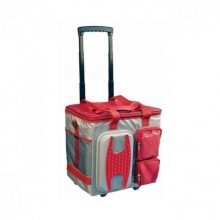

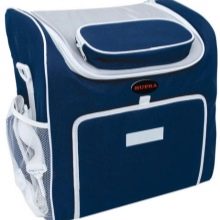
Compression
A miniature portable version of a household refrigerator that uses a refrigerant. The environmental conditions do not have any influence on the operation of the device, therefore it will be effective even in the conditions of the Black Sea resort. Compression refrigeration units are capable of not only cooling, but also freezing food, while they are quite economical.
The disadvantages include the large size and high cost of the devices.
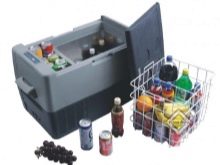
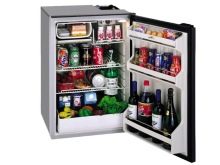

Absorption
By the principle of operation, they are similar to thermoelectric models, but the source of energy can be an electrical network from a cigarette lighter and liquefied balloon gas. They are able to maintain a difference of 30 degrees with the temperature outside the refrigerator compartment, and quickly adapt to changes in ambient temperature.
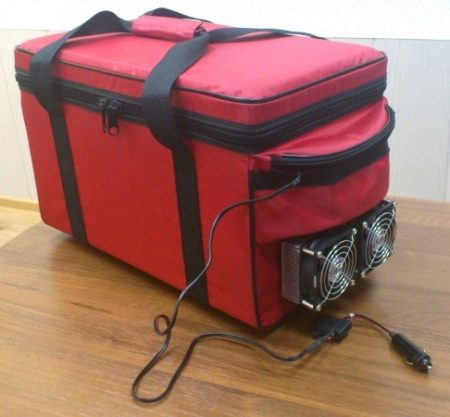
Isothermal containers and thermal containers that do not have the capabilities of a refrigerator, but only maintain the required temperature, can also be of different types.
Road food
A must-have for students, office workers, summer residents, fishermen and travelers. Food containers come in compact sizes (sandwiches, lunch boxes, insulated containers for one serving), medium and large (bags, backpacks).
In a small volume, they are able to keep a fresh snack during the day, therefore, they are convenient to use for those who take food with them to work, study, or a bike ride. In a large format, cooler bags will ensure the safety of a full meal for the whole family on a picnic or on the beach. They will also come to the rescue on a long car trip or travel to the sea by train.


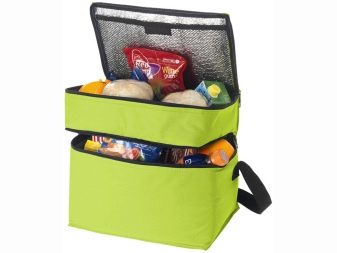
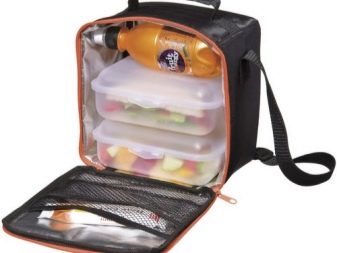
Any food can be transported in food bags that can be pre-kept in the refrigerator for several hours, be it sandwiches, curds, yoghurts or grandmother's okroshka on kefir. Most thermal bags, due to the fact that they are similar in structure to a thermos, are able to keep food not only chilled, but also hot.
This is a convenient option for walking in the winter park, going to the ice rink, fishing and other activities in the cold season. Hot sandwiches or pies will stay that way for hours while the owner is skating, playing snowballs, or sitting with a fishing rod over a hole in the ice.
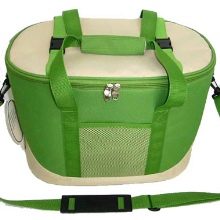
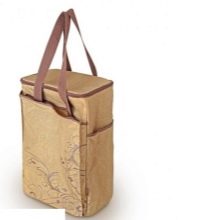
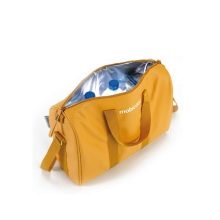
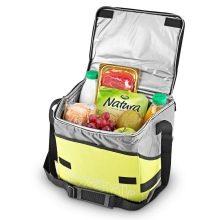
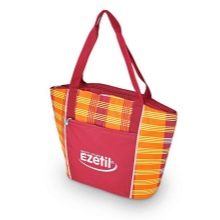

For bottles
There are many moments in life when it is necessary to take additional liquid on a trip, whether it be drinking water, juice, dairy or alcoholic products. For this purpose, there are cooler bags of a special format with compartments that repeat the shape of a standard bottle up to 15 centimeters in diameter.
Typically, these bags have 6 compartments, 3 on each side, and handles for easy transportation.
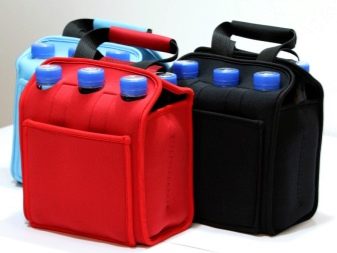
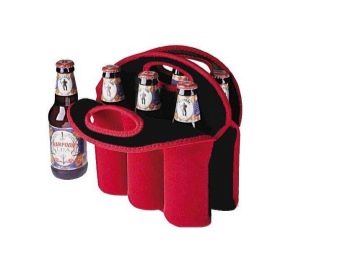
For baby food
Small, tube-shaped or rectangular insulated baby food bag slows down the cooling of food.
Most often, these bags contain one or more compartments for storing baby food for several portions. The bag can keep the temperature stable for up to 3 hours. Then the temperature will start to drop or rise, depending on whether the food is hot or cold inside. The rate of loss depends on environmental conditions.



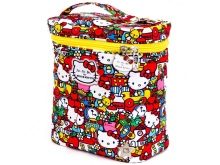
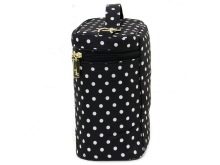
For medicines
No mother will forget to take a first-aid kit with medicines for all occasions to nature. A cooler bag for medicines is the only sure way to transport medicines that require special storage conditions. Of course, it is not necessary if you only take aspirin and a patch with you, but most other means are afraid of light, direct sunlight and high temperatures.
These include: all types of eye drops, some ear drops, suppositories, ointments, vaccines, medicines with bifidocultures and interferon, insulin, antiseptics and other drugs, the instruction to which is credited with storing them in a cool dry place.
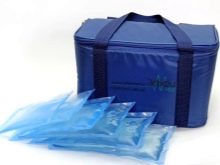


The optimum temperature for storage is from 2 to 5 degrees above 0. Additional protection against condensation will be provided by individual cellophane packaging.
Medical containers are available with a capacity of 2 to 50 liters. They differ not only in weight, size and useful volume, but also in operational capabilities. So, bags up to 6 liters are able to keep the cold up to 12 hours, medium-sized - up to 18, large-sized - up to 20.
For transportation over long distances up to 3 days, professional medical equipment is used.
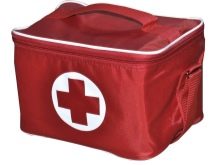

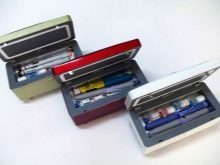
For a picnic
It differs from a travel bag for food in that, in addition to a thermo compartment for storing food, it has a set of dishes for a group of 4-6 people. The dishes are not disposable, made of high-quality plastic that does not absorb odors, does not fade, is perfectly clean both in the dishwasher and in the traditional way.
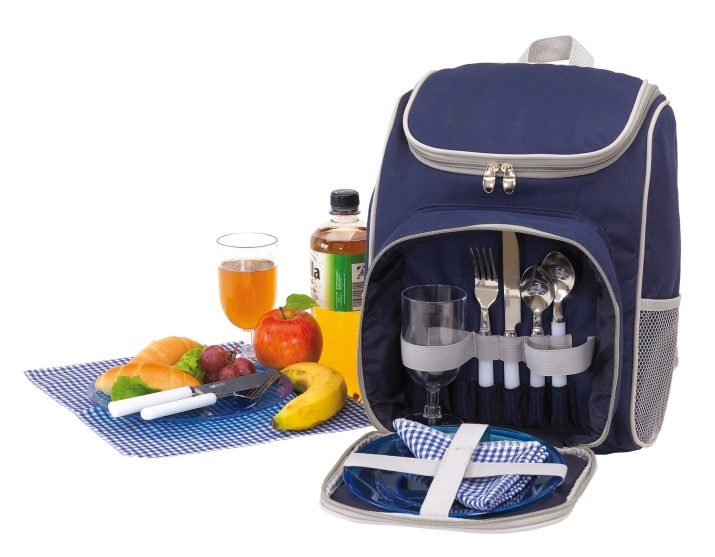
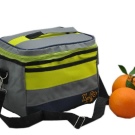

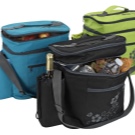
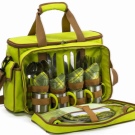
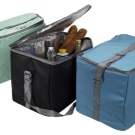
On wheels
The thermal bag on wheels is designed according to the same principle as a travel suitcase. It is convenient during long walks, because it does not need to be dragged, and even a child can roll it along.
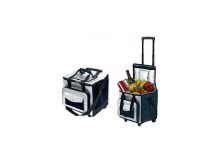
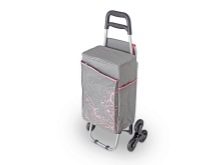
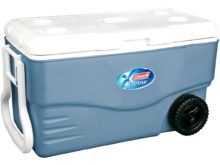
Foldable
An empty cooler bag is even easier to transport than a wheeled bag. Any model larger than a sandwich maker and lunchbox folds into a fairly small rectangle that will take up very little space in a backpack or car trunk.
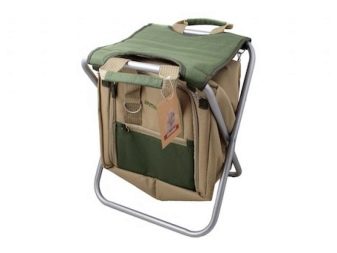
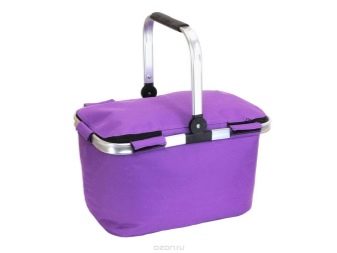
Portable containers with rigid plastic walls are not able to change their shape.
With columns
A cooler bag with speakers or thermobar is made for those who like cold drinks and hot summer hits. Lovers of outdoor recreation and real music lovers will appreciate the convenient combination of the functions of this item, because with its small dimensions, it effectively solves the problem of perishable food and provides picnic participants not only with soft drinks, but also with an excellent mood.

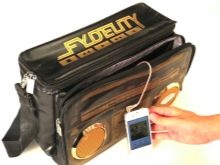
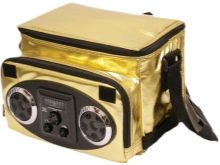
The presence of a slot for a flash card and a built-in radio allows you to choose any repertoire to the taste of vacationers.
For ease of use, a shoulder strap and attachments to the bicycle handlebar are provided. Necessary little things can additionally be placed in mesh pockets on the sides of the product.
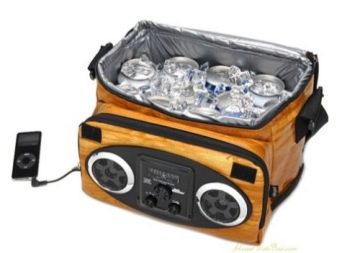
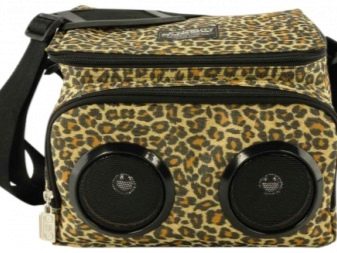
Dimensions (edit)
Small containers are designed for storing food for one person. Their average weight - 400-500 grams, is quite enough for a school breakfast or a work snack. It is most convenient to store sandwiches or sandwiches, fruits, casseroles, pancakes, small jars of drinks in lunch boxes.
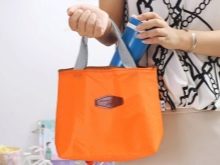
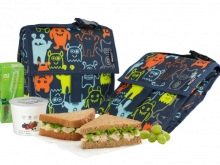
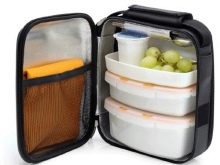
Medium bags are designed for 10-15 kg. They can be in the form of a backpack that is placed over the shoulders, shoulder bags or in the hand. Conveniently folded into a small envelope after transport.
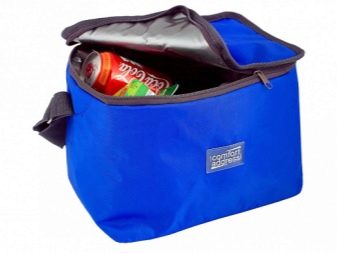
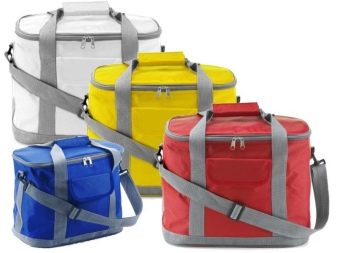
Large bags and containers are designed for volumes up to 35-120 liters, depending on the size, car refrigerators - up to 220. As a rule, these are models on wheels. They can also be folded after use, if they are not plastic thermal containers.
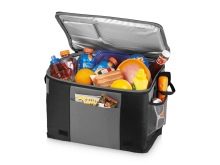
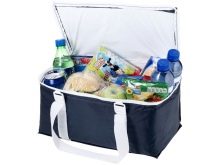
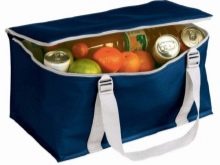
Material
The outer layer of the refrigerator bag is made of very dense, durable and elastic materials that are easy to clean and repel water: nylon, polyester, bolognese and PVC fabrics. The inside of the product must be sheathed with reflective PVC film or foil. Between these two layers there is a foam plastic frame, and thermal insulation is provided by a polyethylene foam or polyurethane foam layer, and in some models - a special gel.
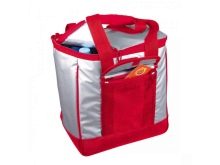
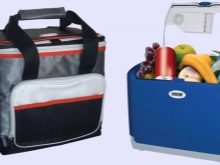

Gel thermal bags are a patented technology, the essence of which is that a substance is pumped into the walls of the product, which maintains a low temperature for a long time and is able to cool room temperature products placed inside.
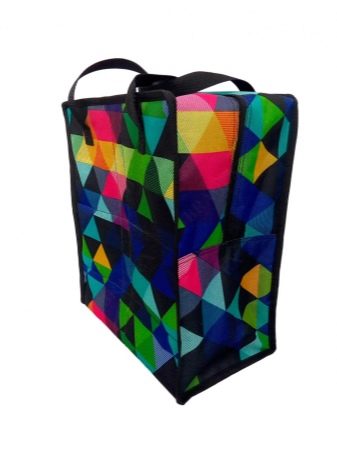
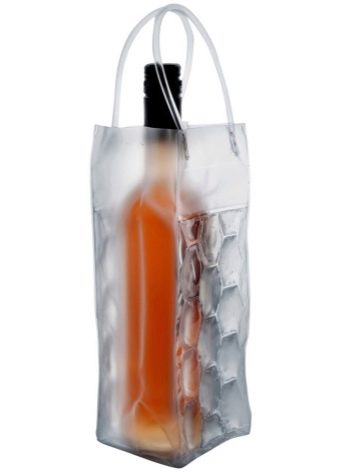
Before use, such a bag must be placed in the refrigerator for 12-14 hours.
Gel bags cannot be tumbled or tumbled dry. Hygienic care is carried out manually with a sponge and soapy water.
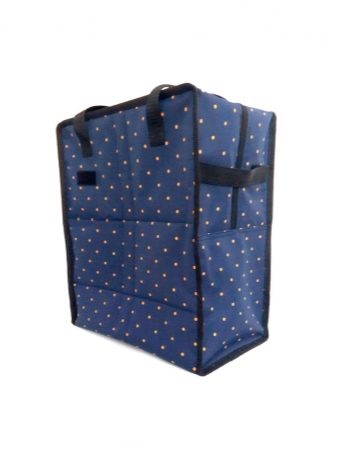

Thermal containers are designed according to the same principle as isothermal, but the walls are made not of fabric, but of dense polymers. Plastic walls provide additional protection for products, as they do not deform and conduct heat worse.
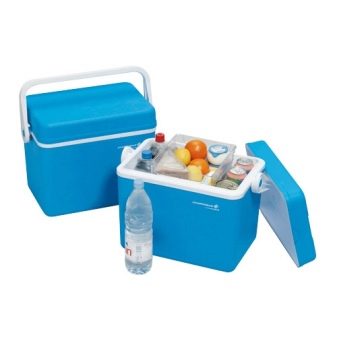

Cold storage batteries are plastic containers filled with refrigerant in the form of a solution or gel. When frozen, this substance absorbs cold and cools down to sub-zero temperatures, keeping the cold for a long time. For every 3-5 liters of usable volume of the bag, a battery of at least 200 grams is required.
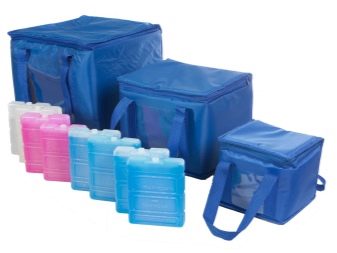
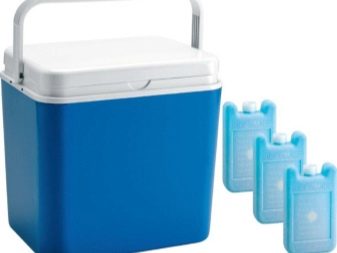
Colour
The portable cooler bag can be any color you prefer. Manufacturers are trying to produce products of less soiled colors, which at the same time reflect, rather than absorb, the sun's rays. Red, blue, gray, orange patterns are widespread. Variants in bicolor from various color combinations are possible. Bags for baby food are distinguished by a particularly bright spectrum and additional decorations in the form of animals, flowers, cartoon characters, and patterns.
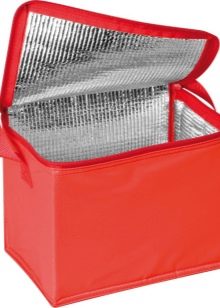
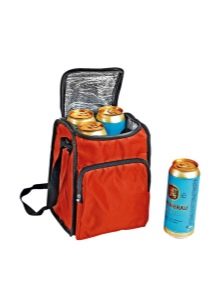

How does it work?
The principle of operation of the product is simple and intuitive from its design. Each of the layers is made of materials that are capable of absorbing and retaining cold, practically do not conduct heat. It is important to take into account that the duration of keeping food fresh and cold depends not only on the materials and batteries, which must spend about 10 hours in the freezer, but also on the temperature of the food itself. They should also be kept in the refrigerator beforehand, like the bag.
It is also worth taking into account the ambient temperature - the higher the degree, the faster the food will heat up. In the case of hot food, cool it down.
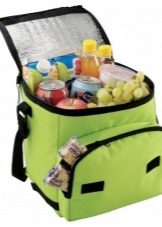
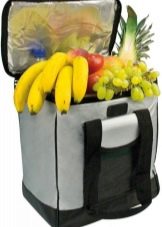
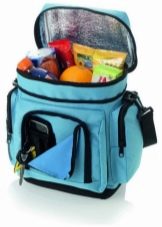
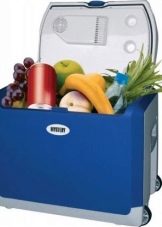
How to use?
The thermal bags are distinguished by their ease of use:
- To achieve the maximum effect, all its components and products must first be cooled;
- When choosing which products to put inside, you can use an elementary rule, which states that heat transfer occurs more slowly on a larger surface. For example, one liter bottle will take longer to cool than two half a liter;
- The further the bag is from sources of heat and direct sunlight, the longer it will keep cold; You should not save on batteries, their number significantly extends the shelf life of fresh products;
- If the batteries are not at hand, they can be briefly replaced by a heating pad or plastic containers with saline solution kept in the freezer;
- If you need to keep food warm, you do not need to use rechargeable batteries;
- Additionally, a kitchen towel will help insulate the container with a hot lunch. You can pre-iron it with an iron.

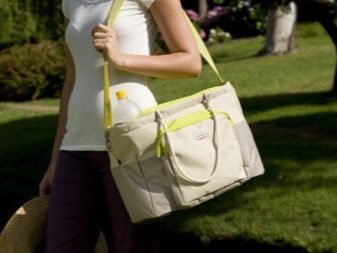
How long does the cold keep?
The ability to maintain a stable temperature inside the container depends on the size of the bag, the materials from which it is made, the number of batteries, the external temperature, the time that the food and cold elements spent in the refrigerator.

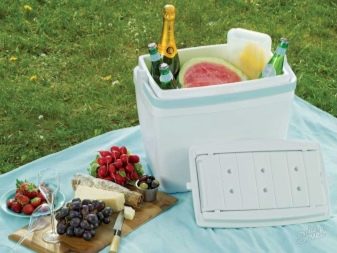
Children's bags, which are more often used as a thermos, and not as a refrigerator, maintain the temperature at the same level for up to 3 hours, bags without a battery - up to 4 hours, with batteries - up to 13. Gel bags can stay cold for up to 10 hours.

How to choose the right one?
When choosing a thermal bag, you should pay attention to the following parameters:
- Dimensions. You should not buy a bag that will fit a snack for a football team if it is supposed to take provisions for a picnic of 4 people in it;
- Material. The outer layer should be dense, the plastic should be strong, and the inner space should be lined with PVC film, not colored oilcloth;
- Seams. There should be no protruding threads, weak and crooked stitches;
- Wall thickness. For the preservation of products, a thickness of at least 0.8 mm is required. The wider they are, the longer the product will keep the temperature;
- Fittings. Velcro and locks also play an important role - they ensure tight preservation of products inside the container, preventing warm air from entering;
- Belts, wheels, handles. It is worthwhile to foresee exactly how you plan to carry the bag, especially if its volume is 120 liters. The handles should be tightly sewn, the wheels are preferable to gel, rather than plastic;
- Guarantee period. As with any product, the insulated bag may be of inadequate quality. Without a warranty card, this purchase will be wasted money.

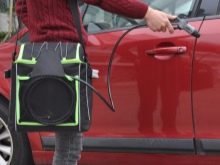
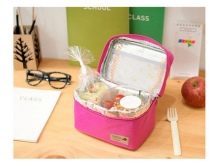
Brands
When purchasing a bag for the first time, you should take a closer look at the models that have already won the favor of buyers, having established themselves as high-quality and convenient products. These include the following brands: Arctic, Ezetil, Decathlon, Igloo, Coolfort, Nordway.
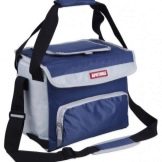
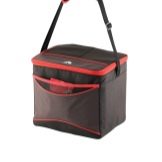
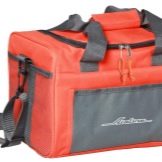
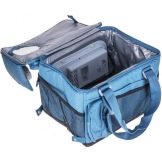
What is the price?
A thermal bag is an acquisition available to anyone. The smallest model will cost about a thousand rubles, the average - 3-5 thousand, roomy - from 9000. The average cost of a thermocontainer is from 7000 rubles, an auto-refrigerator - from 10,000.
The upper price limit depends only on financial capabilities and can reach amounts over 50,000.
Cold storage batteries are usually not included. The cost of one piece is from 200 rubles.
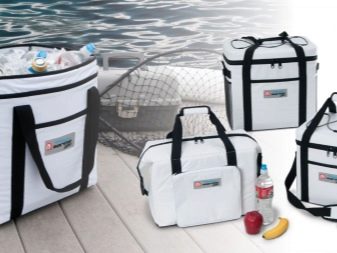

Reviews
According to numerous reviews of the owners, the thermal bag performs its functions perfectly.
The product is praised for its quality, durability, ease of use, and how well it maintains the desired temperature.
They note the spaciousness of even the smallest model and ease of transportation.
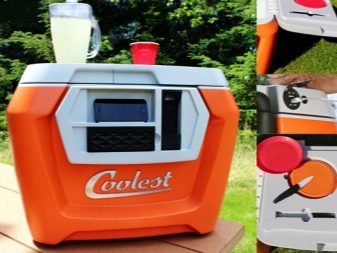

Thermal bags for baby food deserve special attention. They are ideal for carrying warm milk and formula when traveling and walking - babies are fed and mothers are happy!











